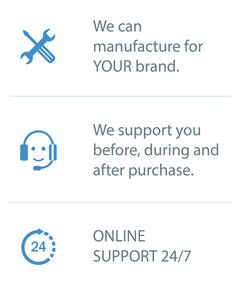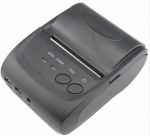D6 (4G)
4G Phones
Camaweigh offers 4G rugged phones in its line of accessories which can be used to connect with its weighing equipment. Camaweigh’s 4G rugged smartphones are very sturdy because of their IP68 rated phone casing which protects them from shock, dust, and water. They offer to variants of 4G phones, the Camaweigh D6 and P8. These 4G phones are equipped with WIFI and Bluetooth capability and are a lot faster than 3G smartphones.
History of 4G Technology
Before technology was as advanced at it is today, the only means of communication throughout the world was thru very basic means like handwritten letter, telegrams, or the like. There weren’t any WIFI or Bluetooth created yet. Mobile phones or cell phones were developed in order to make communication much easier and faster. Cell phones weren’t as “mobile” and easy to carry like today. First generation cell phones were bulky and very expensive during their time. This was because cell phones where new and considered a breakthrough in the communications industry. Having a cell phone was compared to having an expensive car. Although today, many brands and types of cell phones are available at very affordable prices. The very first cell phone was introduced way back 1983 and it was the Motorola DynaTAC 800x. This breakthrough phone was very expensive and had a price tag of 4,000 US dollars. Even with its big and bulky frame, this phone was considered to be the most portable phone at the time. With this phone, people had the ability to contact other people wirelessly between great distances. But even before the first cell phone was released, Martin Cooper of Motorola made the first wireless phone call. It was made using a prototype of the DynaTAC cell phone.
How 4G Became What it is Today
Before 4G cell phones where developed, it had to go thru the other “G” or generations of mobile technology. This is where the journey to creating more portable and smaller wireless communications technology began. Everything began with the 1G technology which was released in 1979 at Tokyo and spread throughout the neighboring countries. Later on the 1G technology would make its way to the USA and was called AMPS or Advanced Mobile Phone Systems. Unlike 4G technology today, 1G had some security issues. The 1G network users were vulnerable to eavesdropping because it was unencrypted. But this issue, although considered a major one at that time, didn’t stop people from purchasing the Motorola DynaTAC cellphone. The DynaTAC had poor battery life of only up to 30 minutes of talk time. Further development in the communications technology paved the way to the 2G cellular networks which rose up on 1990 together with the new line of “2nd Generation” cell phones. 2G represents the number of ways communication could be made between to cell phones. The 1G technology on provided voice calls. 2G, therefore, means mobile phone could communicate through voice and the newly developed basic SMS. The 2G improved from the 1G’s flaws and was more secure and faster. The first SMS message was made in Finland on 1993. During this same year, the first smartphone was released by IMB Simon. The smartphone had a calendar, clock, notepad, address book, email service, a QWERTY keyboard, and touchscreen capability. Eventually 3G technology was created which offered not only calls and SMS text messaging, but also faster internet browsing. It officially came out on 2001 and immediately replaced the 2G cell phones. The 3G technology made it possible for cell phones to support music and videos online. The 4G technology dawned because network carriers noticed that 3G could handle the overwhelming number of bandwidth-intensive applications. 4G phone’s better data optimization offered speeds which were ten times faster than the 3G.
| Model | 2200×1200 (platform size) |
|---|---|
| Battery | 3000mAh rechargeable Li-ion battery |
| Outline dimension | 147.3*76.1*12.7 (H×W×D) |
| Waterproof | IP68 dustproof shockproof waterproof |
| Frequency | 2G: GSM B8/B3/B2/B5 ,3G:CDMA BC0 EVDO ,TD-SCDMA B39 ,WCDMA B1/B2/B5/B8, 4G: FDD-LTE B1/B3/B7/B8/B20 ,TDD-LTE B38/B39/B40/B41 |
| CPU | MTK6755 Octa-core 2.0GHZ |
| Sim card | Dual SIM 1MICRO,1 NANO SIM |
| System | Android OS 6.0 |
| Memory | RAM/ROM: 4GB/ 64GB |
| Main screen | 5.0" FHD TFT IPS, 1980*1020 Gorilla Glass 4 |
| Touch screen | 5 points capacitive touch screen |
| Dimensions(mm) | 147.3*76.1*12.7 (H×W×D) |
| GPS | Supported |
| Camera | Front: 5.0 MP ,Rear : 13.0 MP AF Sony |
| Bluetooth | 4.0 |
| Multi-languages | Support |
| Warranty | Limited 1-year Warranty |
| Certification | on the preparation |
| Accessories | 1*USB cable,1*charger,1*user manual,1*gift box,1* screw driver, 1*OTG cable |
| Function | Geomagnetic /Gravity /Proximity /Compass/Gyro /Light Sensor/NFC/OTG Supported |
* required fields

 +254-736-596-840 (Kiswahili, English)
+254-736-596-840 (Kiswahili, English) 
 French
French Spanish
Spanish











